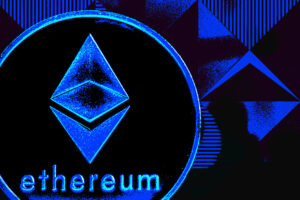
[ad_1]
The last few months’ frenzy of institutional money flowing into Bitcoin (BTC) has seen crypto hitting the headlines — at the least as a novelty asset, at the most as a must-have. There is undoubtedly a trend in the market toward greater awareness and acceptance of digital assets as a new investable asset class.
A June 2020 report by Fidelity Digital Assets found that 80% of institutions in the United States and Europe have at least an interest in investing in crypto, while more than a third have already invested in some form of digital asset, with Bitcoin being the most popular choice of investment.
A good starting point for institutional investors would be to differentiate between crypto (Bitcoin, in particular) and decentralized finance products. To date, most institutional interest has involved simply holding Bitcoin (or Bitcoin futures), with few players dipping into more exotic DeFi products.
There are a plethora of reasons for the recent Bitcoin rage. Some would cite the relative maturity of the market and increased liquidity, which means sizable trades can now take place without resulting in excessive market movement. Others would cite the unusual high volatility, high return and positive excess kurtosis (meaning a greater probability of extreme values compared with the stock market) of the asset class. Bitcoin’s backstory and its limited supply that makes it akin to digital gold have also been highlighted, making it more and more attractive in a world of inflated asset prices and unruly monetary and fiscal policies.
However, the main reason for the recent institutional interest in crypto is much less philosophical, much more practical and has to do with regulations and legacy infrastructure.
Financial institutions are old behemoths, managing billions of dollars’ worth of other people’s money, and are therefore required by law to fulfill an overabundance of rules regarding the type of assets they are holding, where they are holding them and how they are holding them.
On the one hand, in the past two years, the blockchain and crypto industry has made leaps forward in terms of regulatory clarity, at least in most developed markets. On the other hand, the development of the high-standard infrastructure that provides institutional actors with an operating model similar to that offered in the traditional world of securities now allows them to invest directly in digital assets by taking custody or indirectly through derivatives and funds. Each of these represents the real drivers in giving institutional investors enough confidence to finally dip their toes into crypto.
Keeping institutional interest alive: What about other DeFi products?
With U.S. 10-year Treasurys yielding a little higher than 1%, the next big thing would be for institutions to look at investing in decentralized yield products. It might seem like a no-brainer when rates are in the doldrums and DeFi protocols on U.S. dollar stablecoins are yielding between 2% and 12% per annum — not to mention more exotic protocols yielding north of 250% per annum.
However, DeFi is in its infancy, and liquidity is still too thin in comparison with more established asset classes for institutions to bother upgrading their knowledge, let alone their IT systems to deploy capital into it. Additionally, there are real, serious operational and regulatory risks when it comes to the transparency, rules and governance of these products.
There are many things that need to be developed — most of which are already underway — to ensure institutional interest in DeFi products, whether on the settlement layer, asset layer, application layer or aggregation layer.
Institutions’ primary concern is to ensure the legitimacy and compliance of their DeFi counterparts at both the protocol level and the sale execution level.
One solution is a protocol that recognizes the status of a wallet owner or of another protocol and advises the counterparty as to whether or not it fits its requirements in terms of compliance, governance, accountability and also code auditing, as the potential for malicious actors to exploit the system has been proved over and over.
This solution will need to go hand in hand with an insurance process to transfer the risk of an error, for example, in validation to a third party. We are starting to see the emergence of a few insurance protocols and mutualized insurance products, and adoption and liquidity in DeFi need to be large enough to caution the investments in time, money and expertise to fully develop viable institutional insurance products.
Another venue to be enhanced is the quality and integrity of data through trustful oracles and the need to increase the confidence in oracles to achieve compliant levels of reporting. This goes hand in hand with the need for sophisticated analytics to monitor investments and on-chain activity. And it goes without saying that more clarity on accounting and taxes is needed from certain regulators who haven’t emitted an opinion yet.
Another obvious issue concerns network fees and throughput, with requests taking from a few seconds to double-digit minutes depending on network congestion, and fees twirling between a few cents and 20 bucks. This is, however, being resolved with plans for the development of Ethereum 2.0 in the next two years and also the emergence of blockchains more adapted to faster transactions and more stable fees.
A final, somewhat funny point would be the need for improvement in user experience/user interfaces in order to turn complex protocols and code into a more user-friendly, familiar interface.
Regulation matters
People like to compare the blockchain revolution to the internet revolution. What they fail to remember is that the internet disrupted the flow of information and data, both of which were not regulated and had no existing infrastructure, and it is only in the last few years that such regulations were adopted.
The financial industry, however, is heavily regulated — even more so since 2008. In the United States, finance is three times more regulated than the healthcare industry. Finance has a legacy operational system and infrastructure that makes it extremely hard to disrupt and tedious to transform.
It’s likely that in the next 10 years, we will see a fork between instruments and protocols that are fully decentralized, fully open source and fully anonymous and instruments that will need to fit in the tight framework of the heavy regulation and archaic infrastructure of financial markets, resulting in a loss of some of the above characteristics along the way.
This will by no means slow down the fantastic rate of creativity and the relentless, fast-paced innovation in the sector, as a large number of new products in the DeFi space — products we haven’t even predicted — are anticipated. And within a quarter of a century, once DeFi will have first adapted to and then absorbed capital markets, its full potential will be unleashed, leading to a frictionless, decentralized, self-governing system.
The revolution is here, and it is here to stay. New technologies have undeniably shifted the financial industry from a sociotechnical system — controlled through social relations — to a technosocial system — controlled through autonomous technical mechanisms.
There is a fine equilibrium to be reached between tech-based, fast-paced crypto and antiquated, regulated fiat systems. Building a bridge between the two will only benefit the system as a whole.
This article does not contain investment advice or recommendations. Every investment and trading move involves risk, and readers should conduct their own research when making a decision.
The views, thoughts and opinions expressed here are the author’s alone and do not necessarily reflect or represent the views and opinions of Cointelegraph.
Amber Ghaddar is the founder of AllianceBlock, a globally compliant decentralized capital market. With a vast amount of experience across the capital markets industry over the last decade, Amber began her career at investment banking giant Goldman Sachs, before moving to JPMorgan Chase where she held a number of different roles in structured solutions, macro systematic trading strategies and fixed income trading. Amber obtained a B.Sc. in science and technology before graduating with three master’s degrees (neurosciences, microelectronics and nanotechnologies, and international risk management) and a Ph.D. She’s a graduate of McGill University and HEC Paris.
[ad_2]
Source










Thank you for sharing your thoughts. I really appreciate your efforts and I
will be waiting for your next post thanks once again.
my page: 비트코인마진거래
I got good info from your blog
I view something really interesting about your site so I saved to favorites.
I’ll right away grab your rss feed as I can’t to
find your email subscription hyperlink or newsletter service.
Do you’ve any? Please let me recognize in order that I may just subscribe.
Thanks.